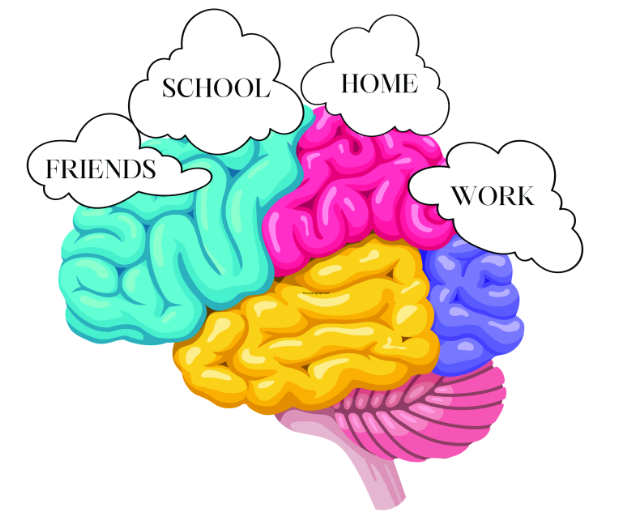For many students, a normal day in class looks like this: take out notes, mentally lock in and focus, and participate in the topic of discussion. For students with ADHD, however, these tasks can be a challenge.
ADHD (Attention Deficit Hyperactivity Disorder) is a neurological disorder that affects an estimated 8.7 million adults in the United States, according to NIMH (National Institute of Mental Health). People who express these traits may feel restless, unable to focus, impulsive behaviors, and forgetfulness.
ADDitude, an organization that specializes in ADHD research, explains the disadvantages of this condition that children possess.
A misconception of ADHD in the general public is that accommodations are used by students to give them an upper-hand or an unfair advantage to other students in the class. There’s a distinct disadvantage for children with ADHD, and the various existing support systems including school policies, accomodations and education legislation seek to decrease this disadvantage for students as much as they’re able.
Typically, many ADHD symptoms overlap with other neurological disorders, such as GAD (Generalized Anxiety Disorder) or ASD (Autism Spectrum Disorder). All three present similar difficulties in social challenges and executive functioning.
Inside and outside the classroom, everyone experiences the condition differently from one another. Rain Weiner (12) shared their perspective on living with ADHD.
“ADHD affects my ability to do other things that people can do easily. Doing homework, laundry, and even getting up to eat can be very difficult for me–I have time blindness, which affects my ability to know how long things will take,” Weiner said.
VHHS has multiple programs in place that can directly benefit students by accommodating their learning process. If a student is looking for more individualized support in their day-to-day lives, they can apply for an IEP (Individualized Education Program), which targets areas of study the student struggles with the most, and can be adjusted to their needs.
Much of this support system focuses on reducing the impact of ADHD symptoms in the classroom.
Kristin Narayan, the Student Needs Specialist and 504 coordinator at VHHS, shared a range of resources that all students can utilize.
“There’s a spectrum and a wide variety of supports–some of them are supports that all students can access. You are not alone,” Narayan said.
Some examples Narayan also mentioned was the school’s PAWS program, which offers support in organization, planning, studying, keeping up with schoolwork and tutoring support. Students can find more direct support in their IEP with these available resources.
The process of a diagnosis depends on the age group of each individual. About one in three children with ADHD will show remission by adulthood. However, the symptoms of inattentiveness continue into adulthood, more so on an internal rather than an external level, according to CHADD.
Ryan Dinklenburg-Ramirez (12) offered her advice to students struggling with ADHD.
“ADHD has made me better-suited for the career I want to pursue–you are not invalid for needing help, it’s just the way you are. If you are looking for support from the school, don’t be afraid to fight for it,” Dinklenburg-Ramirez said.

